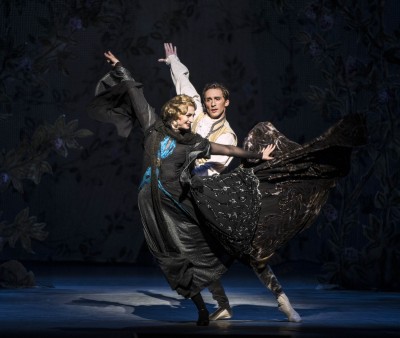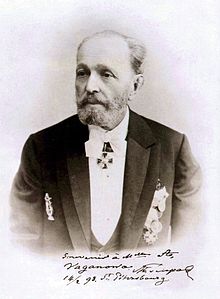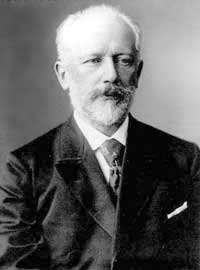SLEEPING BEAUTY in OSLO

Sleeping Beauty, Line Alsaker as Carabosse and Philip Currell as prince Florimund. Lina Alsaker is also dancing her goodbye performances with the National Ballet in the demanding role as Carabosse. Foto: Erik Berg
OSLO: The famouse Tsjaikovsky ballets are allways popular on the balletrepertoire every where in the world. This year the Norwgeian Natinal Ballet is serving their large audience the Sleeping Beauty, in an generouse and very beautiful production from 2009, choreography by Marius Petipa in this version with some segments by Cynthia Harvey and Janek Schergen. It was a huge success at the premiere in Oslo. This time will be performed 10 performances. From June 6. to June 21.
As usual with the Norwegian National Ballet there are several casts, and this gives a possibility for the many talented dancers in the company to show their soloist talents, in large and smaller soloroles. The first two evenings 7. June and 9. June it is to our knowledge so far. Yolanda Correa and Youl Carreno the first evening and Natasha Jones and Philip Currell dancing Auroa and prince Florimund
an oral drug therapy. sildenafil dosage • Consider psychosexual/couple.
. Other evenings Miharu Maki og Chihiro Nomura are dancing the role as Princess Aurora.
Sleeping Beauty is one of the great ballet classics. Every since the premiere in St. Petersburg in 1890, the dancing princess has charmed and captivated audiences all over the world
. The fairy tale about the princess who sleeps for one hundred years, Tchaikovsky’s lovely music and classical ballet in epic imperial style appears to be an unbeatable combination. And the Norwegian National Ballet’s Sleeping Beauty is a production of monumental proportions. 3200 square metres of painted backdrops and 1768 metres of tulle are just the beginning of all that will take your breath away. Not to mention beautiful classical ballet with demanding steps and combinations. The latter is part of what makes the leading role one of classical ballet’s most discussed and challenging.
The ballet legends of history have all danced the role of Aurora and now the stars of the Norwegian National Ballet will once again bring her to life. After the Bjørvika premiere of this production in 2009, the Norwegian newspaper Aftenposten wrote: ”Sleeping Beauty is a gift to all those who want to dream, see light and love.”
The Sleeping Beauty (Russian: Спящая красавица, Spyashchaya krasavitsa) is a ballet in a prologue and three acts, first performed in 1890
. The music was by Pyotr Tchaikovsky (his Opus 66)
. The score was completed in 1889, and is the second of his three ballets. Swan Lake, Nutcracker and Sleeping Beaty. The original scenario was conceived by Ivan Vsevolozhsky, and is based on Charles Perrault´s La Belle au bois dormant. The choreographer of the original production was Marius Petipa.
The premiere performance took place at the Marinsky Theatre in St Petersburg in 1890. The work has become one of the classical repertoire’s most famous ballets.
Composition history
Tchaikovsky was approached by the Director of the Imperial Theatres in St. Petersburg, Ivan Vsevolozhsky on 25 May 1888 about a possible ballet adaptation on the subject of the story of Undine. It was later decided that Charles Perrault´s La Belle au bois dormant. would be the story for which Tchaikovsky would compose the music for the ballet. Tchaikovsky did not hesitate to accept the commission, although he was aware that his only previous ballet, Swan Lake, met with little enthusiasm at that stage of his career
. The ballet scenario that Tchaikovsky worked on was based on the Brothers Grimm´s version of Perrault’s work entitled ‘Dornröschen’. In that version, the Princess’s parents (the King and the Queen) survived the 100-year sleep to celebrate the Princess’s wedding to the Prince. However, Vsevolozhsky incorporated Perrault’s other characters from his stories into the ballet, such as Puss in Boots, Little Red Riding Hood, Cinderella, Bluebird, Ricky of the Tuft and Tom Thumb. Other french fairy tale characters to be featured are Beauty and the Beast, Pretty Goldilocks and The White Cat. Regardless, In the present Oslo production not all these fairytale firgures are being used in the last acts divertisement. Tchaikovsky was happy to inform the Director of the Imperial Theatre that he had great pleasure studying the work and had come away with adequate inspiration to do it justice.
The choreographer was as mentioned earlier Marius Petipa, then ballet master of the Imperial Ballet, who wrote a very detailed list of instructions as to the musical requirements. Tchaikovsky worked quickly on the new work at Frolovskoye; he began initial sketches in the winter of 1888 and began orchestration on the work on 30 May 1889.
The ballet’s focus was undeniably on the two main conflicting forces of good (the Lilac Fairy) and evil (Carabosse); each has a leading motive – leitmotif representing them, which run through the entire ballet, serving as an important thread to the underlying plot. Act III of the work, however, takes a complete break from the two motifs and instead places focus on the individual characters of the various court dances.
Choreography: Marius Petipa, with some segments by Cynthia Harvey and Janek Schergen
Music: Peter Tchaikovsky
Set Design and Costumes: Sandra Woodall
Lighting design: Kristin Bredal
Performers: Dancers from the Norwegian National Ballet and the Norwegian National Ballet School
The Norwegian National Opera Orchestra
Musical direction: Boris Gruzin
Please read our review from Sleeping Beauty in Vilnius in 2009 at: http://www.kulturkompasset.com/2009/12/beautiful-sleeping-beauty-in-vilnius/
Review from Oslo 2009: http://www.kulturkompasset.com/index.php?AID=970&TID=3
And articel from Oslo at: http://www.kulturkompasset.com/index.php?AID=968&TID=3


